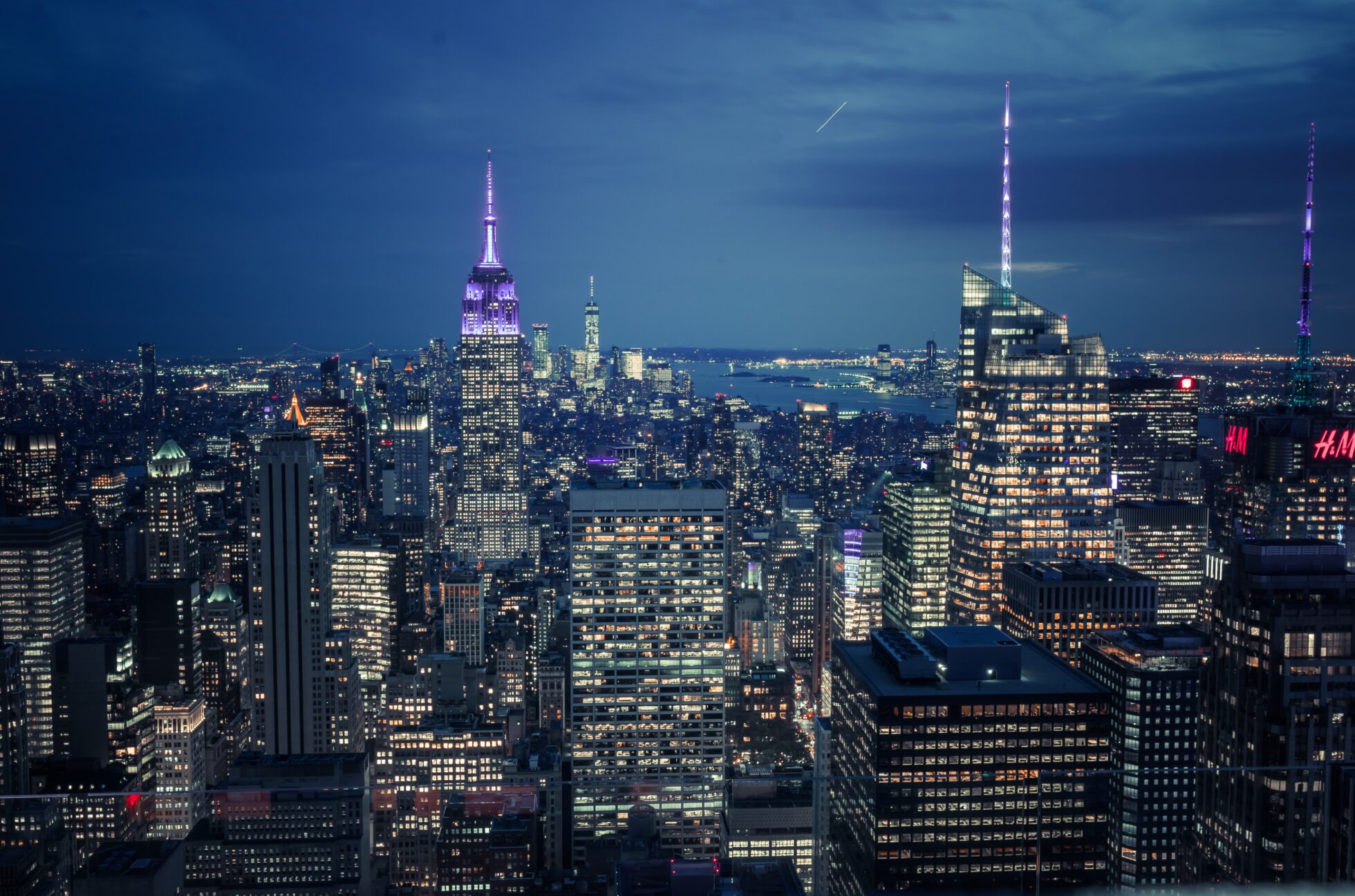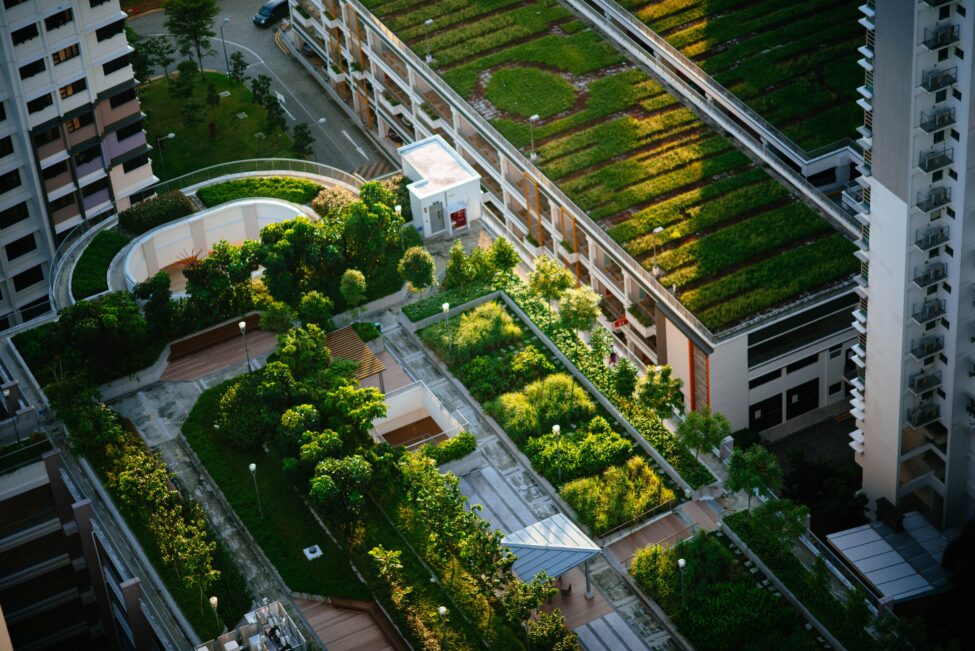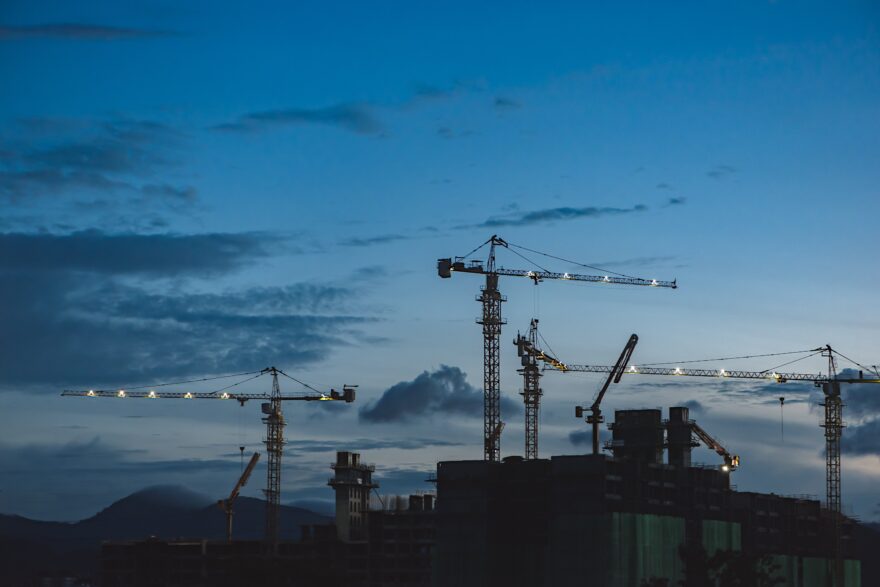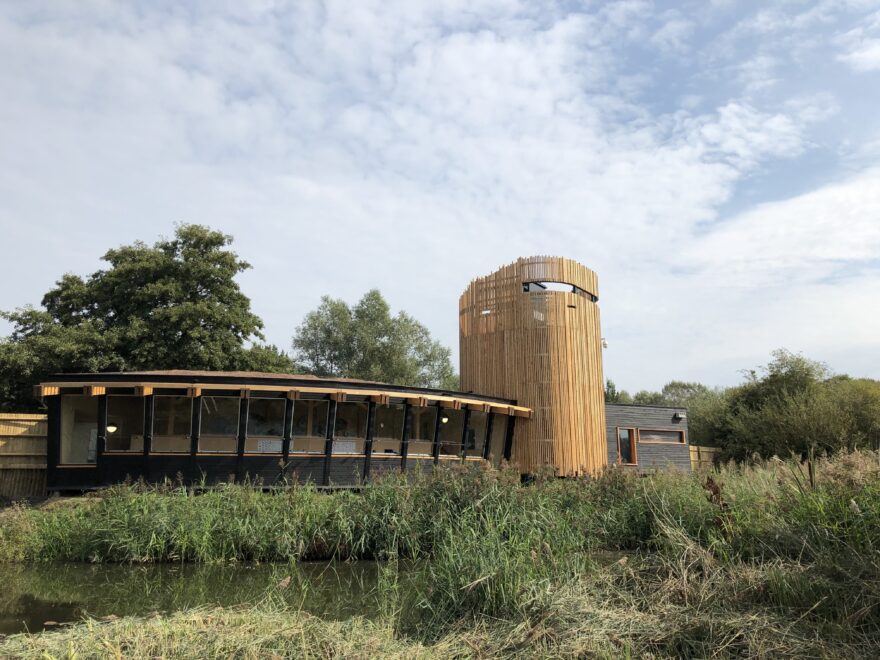How 15-minute neighbourhoods are key to tackling the climate crisis

The growing response to the climate crisis and the ongoing battle with the pandemic has made us review how we live and work in a major way. The concept of a 15-minute city, where everything you need is just a quarter of an hour away, could now be evolving into the ‘15-minute neighbourhood’, according to our four sustainability experts, who explain why…
Our cities may have taken a major knock during the pandemic, with offices, shops, bars and restaurants all empty as people worked from home and stayed local.
But now, a great deal of imaginative work is going into rebuilding for the future.
A huge part of this fightback will be to embrace the essential changes needed to tackle the climate crisis – and to learn lessons from how we have adapted to the difficult situation we have all faced.
Dr Jose Hernandez, sustainability director at Pick Everard, one of Perfect Circle’s shareholders and founding partners, says we are living in interesting times as city centres face a number of issues, including a surplus of office and retail space which is no longer needed.
“There are moves to convert some of these spaces to alleviate housing pressures but there are concerns over that kind of accommodation being of sufficient quality and meeting people’s needs,” says Jose.
“There is a lot we can learn from the 15-minute city idea as we face up to the challenges of the future.
"How do we help people to access everything they need, from shopping to healthcare, just a quarter of an hour from home by walking or cycling?”

Dr Jose Hernandez, sustainability director at Pick Everard
People will still be going to city centres to work but in future, that may just be once or twice a week rather than full-time, says Jose.
“Originally, the 15-minute concept was planned for city centres but it now has the potential to be applied everywhere.
"If more people are going to be working from home, that changes their geographical boundaries, so you have more of a 15-minute neighbourhood.
“It is a huge challenge that needs some great thinking going forward, looking at a redefinition of lifestyles as well as the infrastructure that will be required.
"At the moment, it is very fluid but it is also exciting to consider how we can take advantage of the situation as we try to create a better world.”
The 15-minute concept has been a high profile one, particularly in cities like Amsterdam and Copenhagen.
In Paris, it was a significant point of discussion during the mayoral elections in 2020, with Anne Hidalgo, the mayor of Paris, making it one of the centrepieces of her re-election campaign.
The world-leading urban scientist who has pioneered the concept, Professor Carlos Moreno, joined a panel of industry professionals earlier this year to discuss whether Nottingham could become one of the world’s first true 15-minute cities.
“And it’s interesting that the concept has been raised in some of the works that we're doing in London and Birmingham, with boroughs and councils looking to incorporate the idea in new projects and development areas,” says Jose.

Sara Boonham, head of cost management UK at Gleeds
Bolster green initiatives
Hyper localism is clearly the silver lining of the pandemic and the driver behind a new urban planning model to create stronger local communities, says Sara Boonham, head of cost management UK at Gleeds, one of Perfect Circle’s shareholders and founding partners.
“The French concept of the ‘15-minute city’ in which all residents are able to meet most of their needs within a short walk or bike ride from their home is noted as being more relevant than ever as a principle for urban development as we work towards Covid recovery,” says Sara.
“We must also respond to the climate crisis by bolstering green initiatives at neighbourhood level and reducing travel.
"Our ultimate aim is more resilient, climate change-resistant cities.”
Health and wellbeing are crucial
The original concept of the 15-minute strategy came from looking at the benefits it would bring to people’s health and wellbeing.
Says Jose: “I understand the importance of that from my own personal experience, having probably lost a couple of million steps in the past year by working from home.
“In some neighbourhoods, looking after the health and wellbeing of people who have been working from home and increasingly shopping online should involve helping them to enjoy more quality time outdoors.
“We need to ensure there are more open, green spaces for people to access – and that is also a major factor in combating climate change.
“And we need to address how people can access public services such as healthcare within a 15-minute radius.”
Sara adds: “Human-powered transportation improves health and wellbeing and the convenient location of services saves time and improves quality of life.
"Of course, the need for transportation is minimised and therefore the reduction in fuel mitigates global warming.”

Jonathan Riggall, director of the built environment at Stantec
Reaching our net zero carbon targets
Any health benefits from people walking and cycling more need to be considered in the context of reducing emissions and improving our air quality by tackling pollution, which leads to thousands of deaths a year.
Ensuring that people can cover all their basic needs within 15 minutes of walking or cycling will obviously have a significant impact in relation to transport.
“The UK has committed to reaching a net zero carbon economy by 2050,” says Jose.
“If we’re going to be spending more time walking the streets and cycling on the roads, we need to see a reduction in the use of petrol and diesel and the introduction of more electric cars.”
A ban on the sale of new petrol, diesel and hybrid cars is being introduced in 2035, five years earlier than previously planned, to support this commitment and to help significantly improve air quality in towns and cities.
Jose says it is also essential that future public transport provisions should see an emphasis on more green solutions, such as electric buses.
The International Energy Agency has also recommended no new fossil fuel boilers should be installed from 2025.
Future developments will need to show how they are going to be net zero carbon, says Jonathan Riggall, director of the built environment at Stantec, one of Perfect Circle’s preferred partners as part of its PrimeCore team.
He points to the PAS 2080 verification, designed specifically to address carbon management in infrastructure schemes, as well as measures in the Future Homes Standards, which will dictate energy efficiency levels, ventilation and airtight construction methods, and move away from fossil fuel heating.
“The concept of net zero allows for potential investments in carbon removal through other means, such as netting the carbon balance,” says Jonathan.
“Approaches include investing in carbon offsetting measures. However, not all carbon offsets are created equal, especially if net zero is our target.
“This is of particular importance for local authorities that require carbon offsetting to meet net zero carbon policy requirements and want to implement offsetting projects.
"The Oxford Principles for Carbon Offsetting are a good place to start when defining where money is spent.
“Ultimately, there is a big difference between carbon avoidance projects and carbon removal projects, especially if ‘net zero’ is the ultimate goal.”

Tara-Leigh McVey, infrastructure director at Perfect Circle
Tackling our infrastructure
We must create an infrastructure that will support net zero or low carbon developments.
The conversion of existing buildings brings an opportunity to upgrade the building fabric or the heating and ventilation systems.
“Future developments will need to show how they are going to be net zero carbon,” says Jose.
"They might not be able to achieve this straight away and they may need to have some carbon offsetting.
“Of special interest is carbon insetting - local projects and practices to reduce your carbon footprint.
"So, for example, local authorities could plant more trees or increase green spaces to help absorb CO2 in a geographical area.”
That would have the benefit of providing facilities and green infrastructure for the public that would align with the 15-minute neighbourhood concept, while also investing in carbon-saving projects.
Tara-Leigh McVey, infrastructure director at Perfect Circle, says the 15-minute city is an exciting concept for the world of infrastructure, particularly with how important the delivery and end performance is for the user.
“Often in design, it’s about the lifespan of a bridge or structure, for example, but this adds in an entire new dimension that will drive us as an industry to think about how many purposes that piece of infrastructure can deliver to a community,” she says.
“We need to be thinking about this from day one at the pre-feasibility stage as it will influence the entire development of the design, such as links to the right stakeholders, the benefit and cost evaluations and potentially funding regimes.”

Planning for rising temperatures
“We must step up preparations for rising temperatures and adverse weather conditions,” warns Jonathan.
“The recent extreme temperatures in Canada and resulting demands on the infrastructure are a sign of what the future looks like for our UK communities if we fail to take action now.
“Not only do we need to support net zero or low carbon developments that will mitigate the effects of climate change, but we need to prepare for the damage that can’t be undone.”
He says that because temperatures are going up around the world as a result of greenhouse emissions, the way we design, plan and build our communities need to reflect this.
“Urban areas are especially vulnerable. Since buildings and roads absorb heat, cities are hotter than natural environments. This is called the urban heat island effect, which poses acute risks to human health.
“It discourages physical activity, uses greater energy for air conditioning, and increases risks for heat-related illnesses – supporting the case for the creation of 15-minute cities.”
Stantec is masterplanning for a hotter future, balancing the need to reduce heating loads through insulation against the risks of overheating in the summer, says Jonathan.
Heat resilience tactics can include the use of tree canopies, green-blue roofs, active shading, passive ventilation, and material selection with good thermal mass properties incorporated into designs.
“Urban design should be multifunctional,” he explains.
“Designs should contribute to improved air and water quality, public health, water conservation, and carbon reduction.
“Designing for people in vulnerable communities rather than designing by numbers is critical.”
A word of warning
“Undoubtedly the 15-minute city is gaining significant traction politically and in planning circles but the loose definition of the concept and the varying transportation modes considered in defining the area mean that even conventional suburban sprawl might qualify under some circumstances,” warns Sara.
“The reality is that while automobiles must be accommodated in the 15-minute city, they cannot determine its scale or urban form, otherwise most metropolitan areas will already qualify as 15-minute cities – thus devaluing the concept.
“A further concern is that the concept could be seen to give rise to real subdivision rather than supporting the primary role of the city in connecting people and offering places of opportunity.”

Don’t ignore social divisions
“We all embrace the principles of accessibility and less use of motor vehicles and such, but we should not strive for cities that create disconnected neighbourhoods by focusing on 15-minute portions in isolation,” says Sara.
“We must also recognise that the historic development of our cities has, in many cases, created buffers between us across race and class – creating deep social divisions.
"Ignoring and failing to address the histories of urban inequity within the 15-minute city concept development could serve to further alienate marginalised communities.”
These concerns could be alleviated with a systematic and holistic approach that puts social relationships at the starting point, says Sara.
A hyper-local planning system could act as a vehicle for addressing questions of social or environmental justice, with a unification of urban planning with other local policies.
“The concept essentially gets to the heart of the current urban issues of overcrowding, housing shortages, congestion and increased commuting times, uneven access to services and amenities and vastly disparate access to employment opportunities,” says Sara.
“It will offer a multi-hub city that provides individuals with equal access to housing, places of work, recreation, and efficient transport within locally oriented neighbourhoods.”
Looking to the past
We need to reflect on how cities were once designed around people rather than cars – with most having the structure of a 15-minute city, says Sara.
Re-establishing the concept at their heart may be simple depending on the extent of urban renewal and highway development that has taken place.
“Aligning more recent cities and suburban areas with the principle is undoubtedly more challenging,” she adds.
Conclusions for the future

“As we move towards achieving a carbon neutral future, it’s vital that everyone involved in the built environment – whether that’s contractors, designers, planners or councillors – works collaboratively to create a sustainable infrastructure,” says Jose.
“It is a long-term plan and needs significant investment, commitment and support – but we are moving in the right direction and despite these horrendous times that have affected people and their families, there are many positive things we can look forward to in the future.”
While the benefits of the 15-minute model are significant, changes at this scale can create obstacles to overcome, says Sara.
“We must embrace the fact that every city is different.
"Most importantly, we must make sure this transformation is adapted to the context and characteristics of each urban area rather than create blueprints that do not respect the uniqueness of individual places.
She concludes: “Undoubtedly, cities will play a key role in achieving sustainability in a post-pandemic world, and the 15-minute city model constitutes a relevant starting position for policy-makers all around the globe.”

